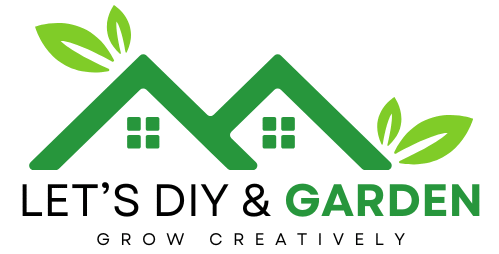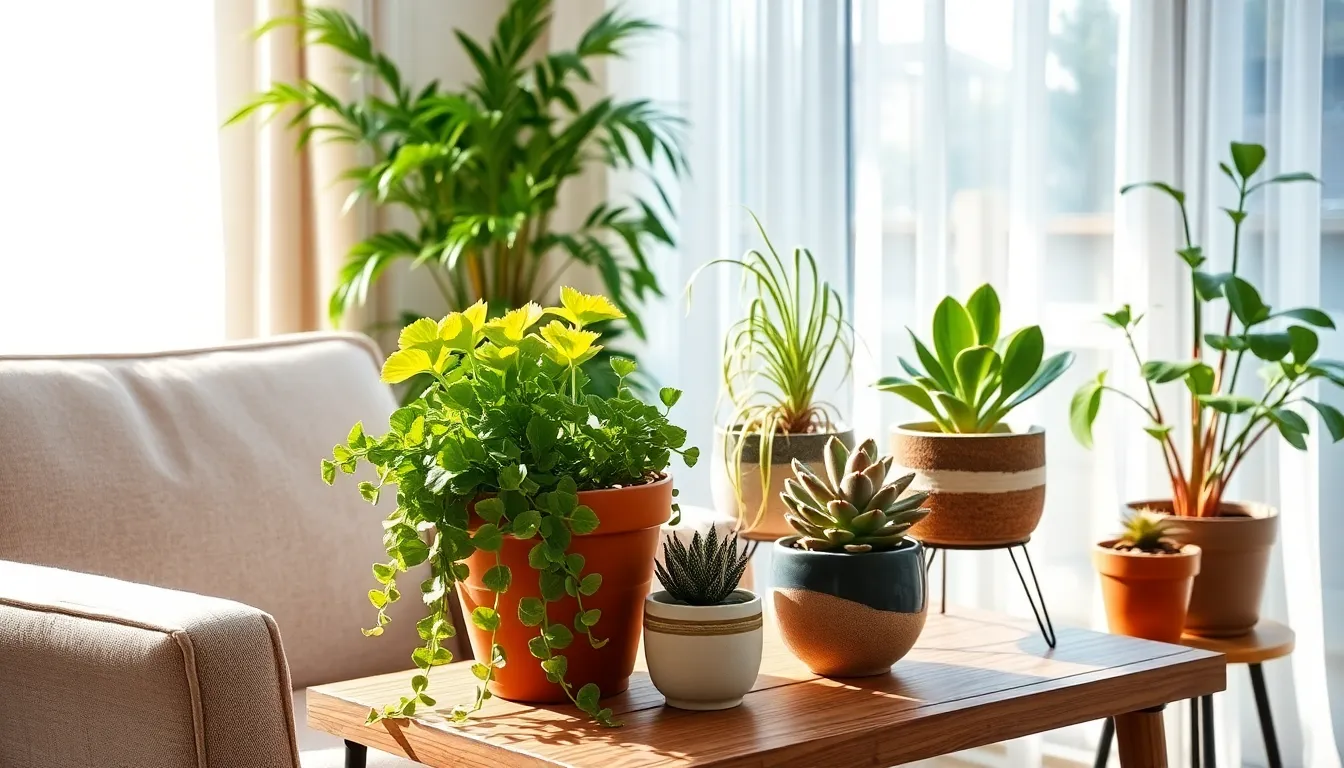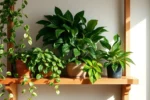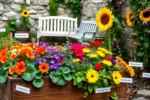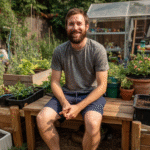Welcome to “Simple Indoor Gardening Ideas for Beginners,” where the joy of nurturing plants meets the comfort of your living room! Whether you’re just starting out or have years of soil under your nails, this guide is designed to bring the vibrant world of gardening into your home with ease and enthusiasm. Here, you’ll find creative and accessible ideas that transform even the smallest spaces into lush, green havens.
Imagine the satisfaction of watching your plants thrive, purifying your air and brightening your mood with every leaf unfurled. This guide is full of practical solutions that will empower you to grow a beautiful indoor garden, regardless of your experience level. From selecting the right plants to mastering simple care techniques, you’ll gain the confidence to cultivate a thriving indoor oasis.
Dive into the rewarding journey of indoor gardening and discover the endless benefits it offers. Not only will you enjoy a greener, more inviting home, but you’ll also experience the therapeutic joys and successes that come with nurturing life. Get ready to roll up your sleeves and let nature’s magic transform your space, one potted plant at a time!
Choose Easy-Care Houseplants
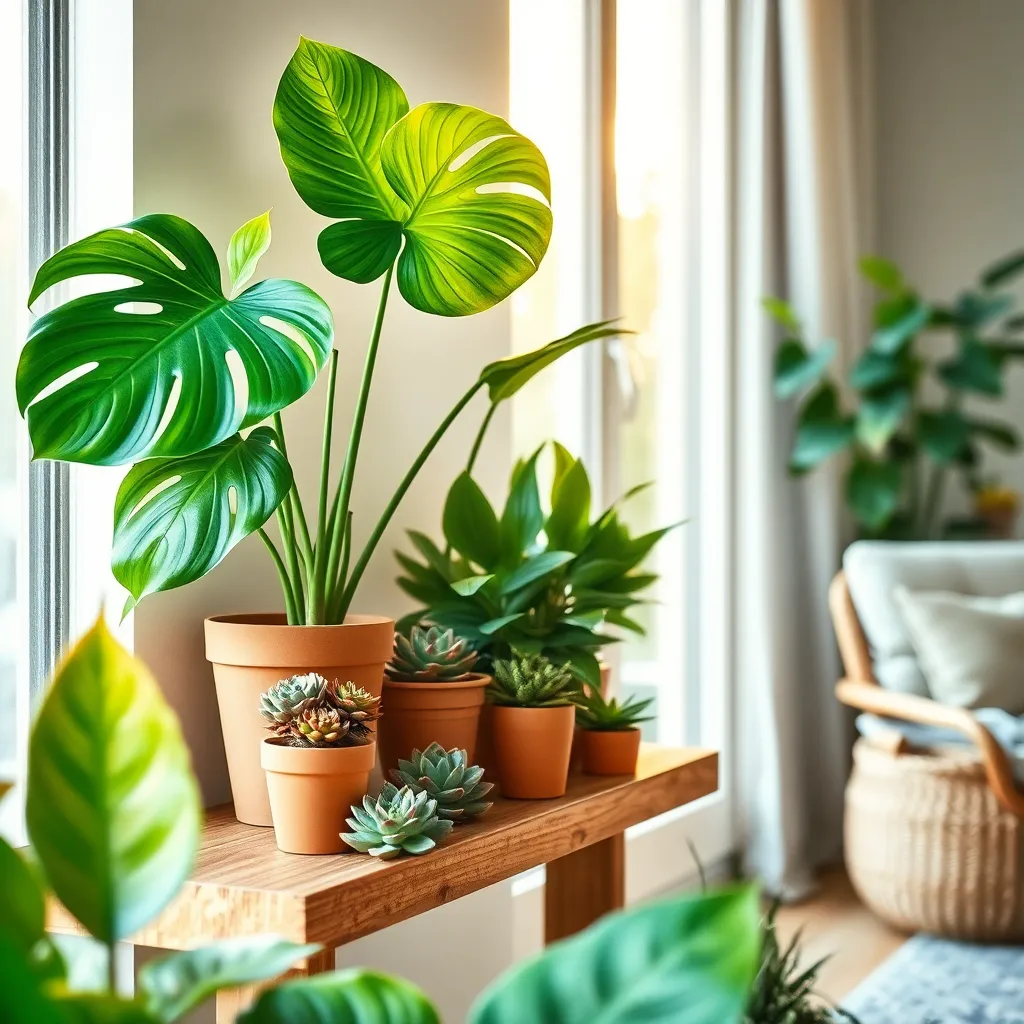
For those new to indoor gardening, starting with easy-care houseplants can build your confidence and ensure success. Consider plants like the snake plant, which thrives in various light conditions and requires watering only when the soil feels dry.
Another excellent choice is the pothos, known for its hardiness and attractive trailing vines. It adapts well to low-light environments and benefits from occasional pruning to encourage denser growth.
When selecting soil, opt for a well-draining potting mix that retains some moisture without becoming waterlogged. A cactus or succulent mix can work well for many easy-care plants, ensuring roots remain healthy and prevent overwatering.
Regularly check your plants for any signs of pests or disease, such as yellowing leaves or sticky residue. Quick intervention with natural remedies like neem oil can prevent issues from spreading and keep your plants thriving.
Position Plants Near Natural Light

Positioning plants near natural light is vital for their growth and health. Most houseplants thrive in bright, indirect light, which can be found near windows that face east or west.
It’s important to observe the light patterns in your home to determine the best spots for your plants. Avoid placing plants too close to windows with direct sunlight, as this can scorch their leaves.
For those with limited natural light, consider using grow lights as a supplement. These can be particularly useful for plants like succulents and herbs that require more intense light exposure.
Rotate your plants every few weeks to ensure even growth, as they naturally grow towards the light source. Pay attention to the foliage; if it becomes pale or leggy, it might be a sign that your plant needs more light.
Water Consistently But Not Excessively
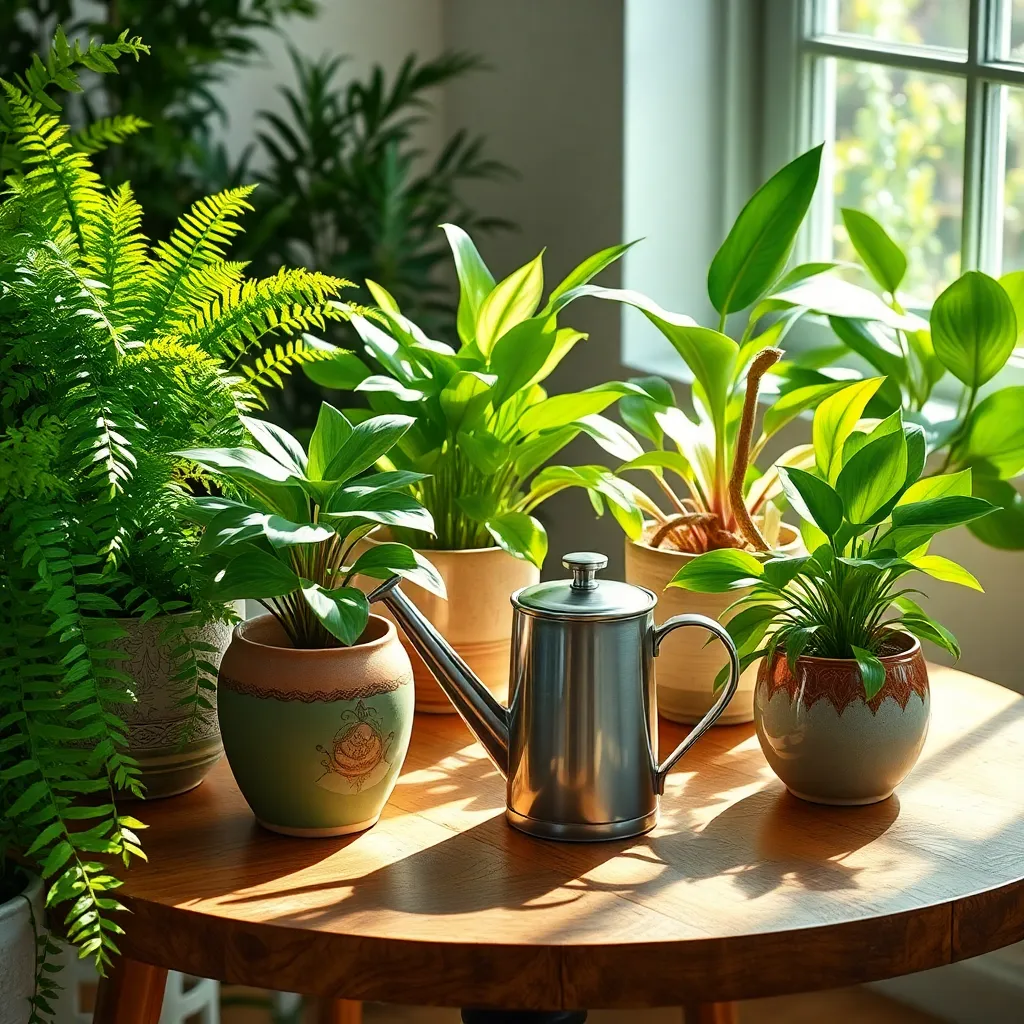
Watering is a critical aspect of indoor gardening, and doing it consistently helps plants thrive. However, overwatering can be detrimental, leading to root rot and other issues; it’s essential to find the right balance for each plant type.
Assess the needs of your plants by considering their natural habitat. For instance, succulents and cacti prefer dry conditions and should only be watered when their soil is completely dry, whereas tropical plants like ferns may require more frequent watering.
To determine when to water, use the finger test by inserting your finger about an inch into the soil. If it feels dry at that depth, it’s time to water; if not, wait a few more days and check again.
Consider using a moisture meter for more precise watering. This tool can help beginners avoid over or under-watering by providing accurate readings of soil moisture levels, ensuring that each plant gets exactly what it needs.
Remember to use pots with drainage holes to prevent water from accumulating at the bottom. This simple step can significantly reduce the risk of overwatering, helping your plants stay healthy and strong.
Use Quality Potting Soil Mix
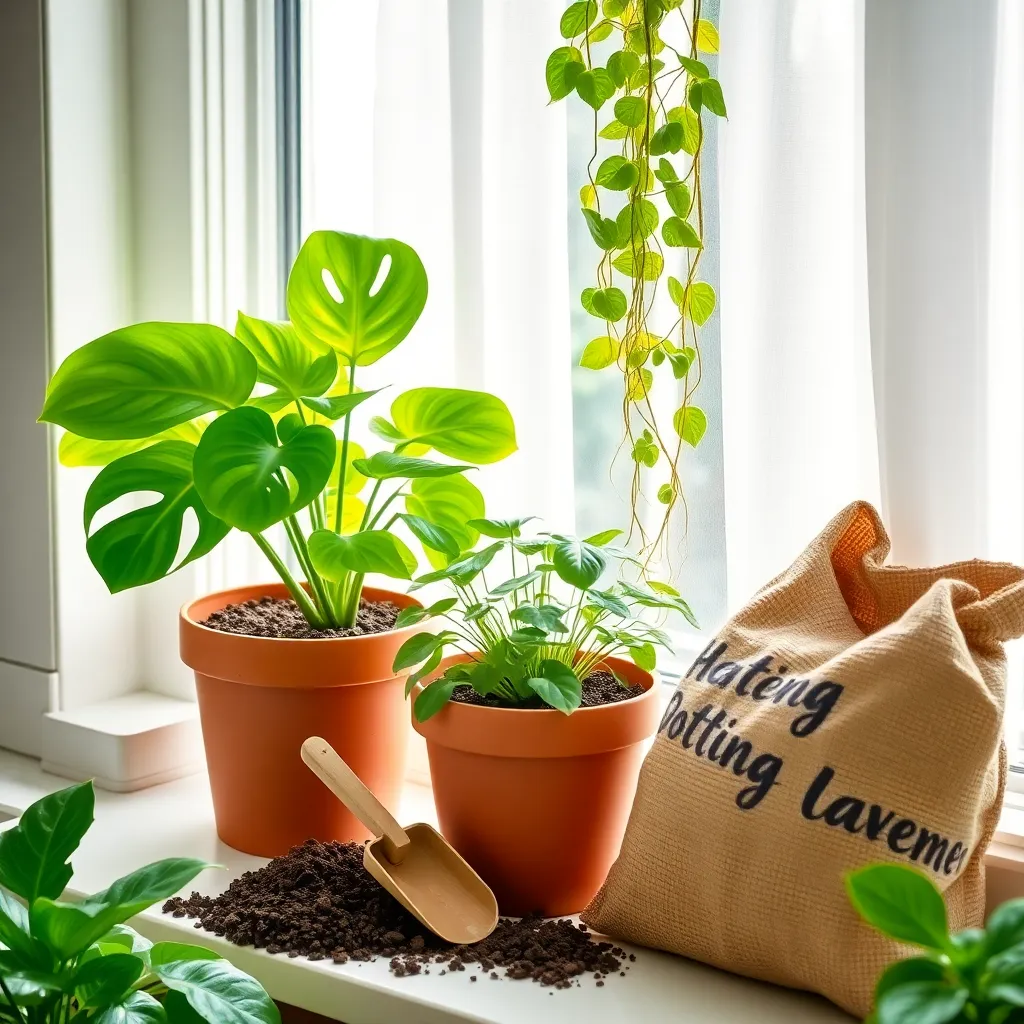
To ensure your indoor plants thrive, it’s essential to start with a high-quality potting soil mix. This type of soil is specifically formulated to retain moisture and nutrients while providing good drainage, which is crucial for healthy root development.
When choosing a potting mix, look for one that contains ingredients like peat moss, vermiculite, or perlite. These components help to create a lightweight and airy environment, preventing your pots from becoming waterlogged and suffocating your plant roots.
For beginners, a general-purpose potting soil is a great starting point, as it suits a wide range of indoor plants. However, if you’re growing specific plants like succulents or orchids, consider using a specialized mix designed to meet their unique needs.
Advanced gardeners might opt to create their own custom potting mix by blending different materials to achieve the perfect balance for their specific plants. For instance, mixing equal parts of garden compost, sand, and peat moss can create an ideal medium for many houseplants.
Rotate Plants for Even Growth
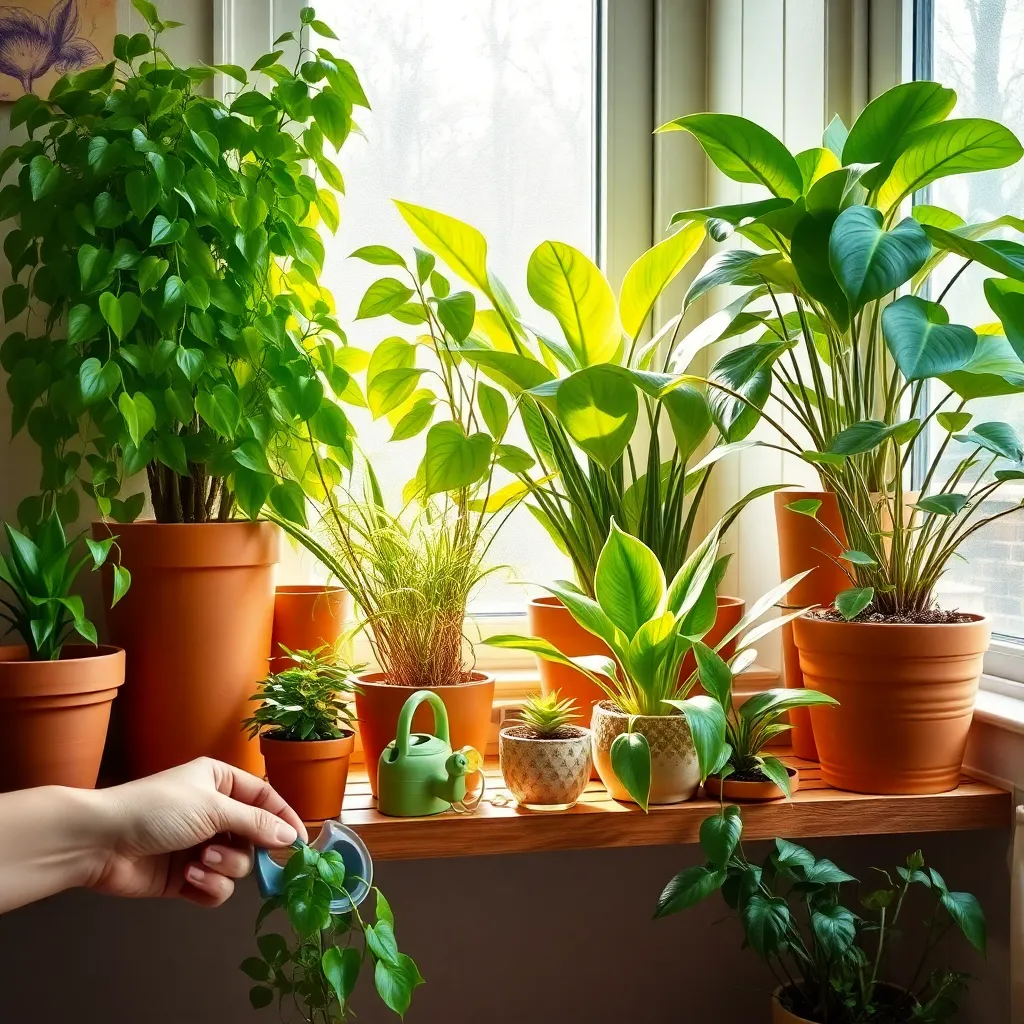
Rotating your indoor plants regularly can significantly improve their growth by ensuring they receive equal exposure to light. Plants tend to grow toward the light source, which can lead to uneven growth if they are not turned periodically.
To achieve balanced growth, it’s advisable to rotate your plants by a quarter turn every one to two weeks. This simple habit helps maintain a symmetrical shape and can prevent the plant from becoming lopsided or leaning towards the light.
For beginners, set a reminder on your phone or calendar to help you remember to rotate your plants. This small but effective action can make a noticeable difference in the health and appearance of your indoor garden.
In addition to rotation, ensure your plants are positioned to receive adequate light according to their needs. Some plants, like succulents, thrive with bright, indirect light, while others, such as ferns, prefer lower light levels.
Conclusion: Growing Success with These Plants
In exploring the world of indoor gardening, we’ve uncovered five enriching concepts that parallel nurturing successful relationships. Firstly, starting small and choosing the right plants mirrors the importance of managing expectations and selecting compatible partners. Secondly, learning the art of patience echoes the need for understanding and timing in relationships. Thirdly, maintaining consistent care highlights the significance of regular communication and effort. Fourthly, adapting to environmental changes teaches us flexibility and resilience. Lastly, celebrating growth reminds us to acknowledge milestones and progress.
As you embark on or continue your indoor gardening journey, consider applying these insights to your relationships. Begin today by selecting one relationship in your life and actively nurture it as you would your plants. Engage in meaningful conversations or plan a thoughtful gesture to strengthen your bond.
Bookmark this article to revisit these concepts whenever you need a refresher or inspiration. By internalizing these lessons, you’re setting the foundation for flourishing connections. Remember, just as plants thrive with care and attention, so do relationships. With your dedication, both your indoor garden and your relationships can blossom beautifully, promising a future filled with growth and joy.
